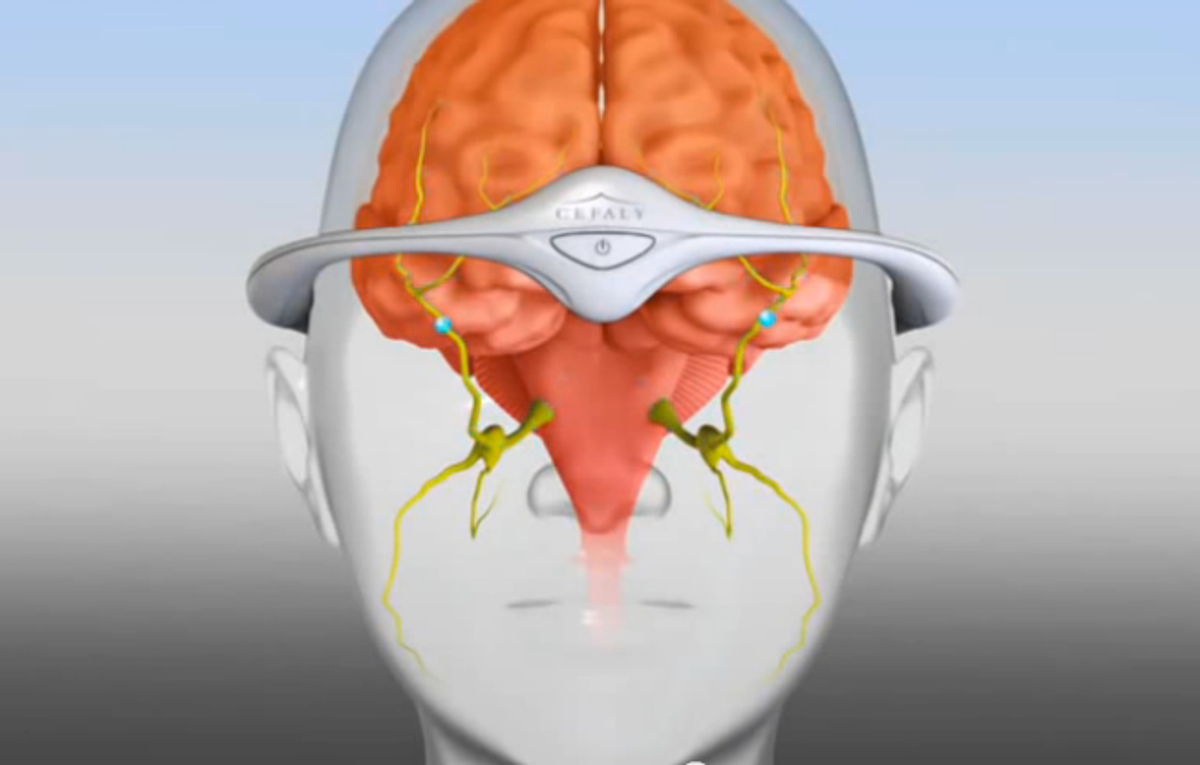Pharmaceuticals are so 20th century. Medicine’s buzzy new trend is electroceuticals: ways to treat ailments with electricity rather than chemicals. Yesterday, the U.S. Food and Drug Administration approved a new entry into this field, when it gave the nod to a device that prevents migraines by electrically stimulating nerves in the cranium. The device is manufactured by the Belgian company STX-Med, and is already approved for commercial sales in Europe, Canada, and Australia.
Cefaly, a battery-powered device that resembles a tiara or a headband, can be used for daily 20-minute sessions. The FDA says this treatment may help migraine patients who can’t tolerate or don’t respond to medication.
The device works by stimulating the trigeminal nerve, the largest cranial nerve, which carries sensory information from the face to the brain, and which has also been associated with the pain of migraine headaches. According to the Cefaly website, its mechanism is based on the gate control theory of pain. By providing sensory input to the nerves, the device essentially keeps a neural gate closed to pain input. This theory explains why you rub your elbow after banging it—the sensory stimulus overrides the pain stimulus, which is transmitted to the brain on different nerve fibers.
The FDA’s approval is based on several studies conducted in Europe. One study of 67 migraine patients, published last month in Neurology, found that Cefaly users experienced significantly fewer migraines over the course of a month than patients who used a placebo device. However, in a user satisfaction survey, only 54 percent of patients who rented a trial device said they wanted to purchase the device. As those users who returned the Cefaly were shown to have used the device for only about half the recommended time, it seems possible that migraine patients are still more comfortable with popping a pill than wearing a tiara around the house.
The product video provides more information, although there’s a good bit of jargon to deal with. It may help to know that nociceptors are the receptors on neurons that respond to a pain stimulus.
Image and video: Cefaly
Eliza Strickland is a senior editor at IEEE Spectrum, where she covers AI, biomedical engineering, and other topics. She holds a master’s degree in journalism from Columbia University.



